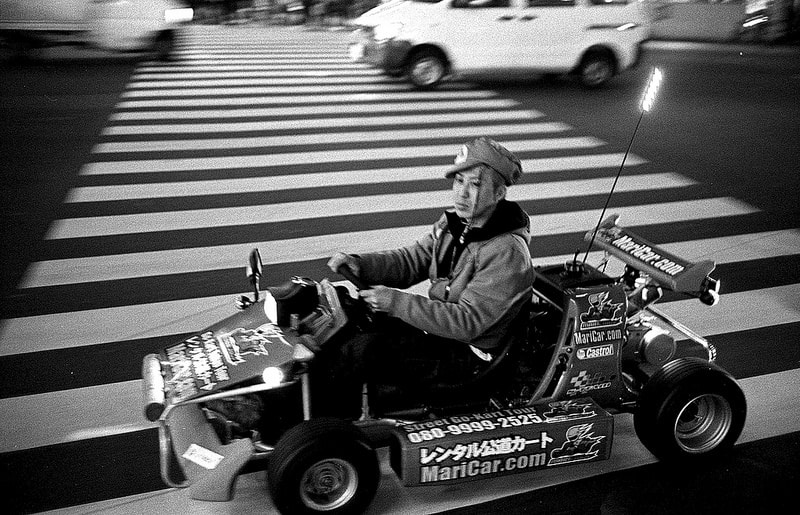
Chemist by day and photographer by night, Gabor Samjeske has been living in Japan since 2003. Working exclusively in film photography since 2007, Samjeske is a talented street photographer with an ability to capture unfiltered life in Tokyo.
Primarily shooting with a Leica M4 and Leica M7, Samjeske is a subscriber to Cartier-Bresson’s “decisive moment” philosophy. And of course, shooting on film in a digital age has only helped sharpen his skills, as he’s limited to the number of snaps on his roll of film.
Through Samjeske’s eye, we see Japanese culture in a new light. His subjects are often—though not always—solitary, burrowed deep in their technology. The German photographer’s black and white photography features stolen moments, allowing viewers to feel as though they are peering through a curtain into someone’s life.
We had the chance to ask Samjeske a few questions about his love of photography, why he shoots on film, and what he hopes his work says about Japanese culture. Scroll down for our exclusive interview.
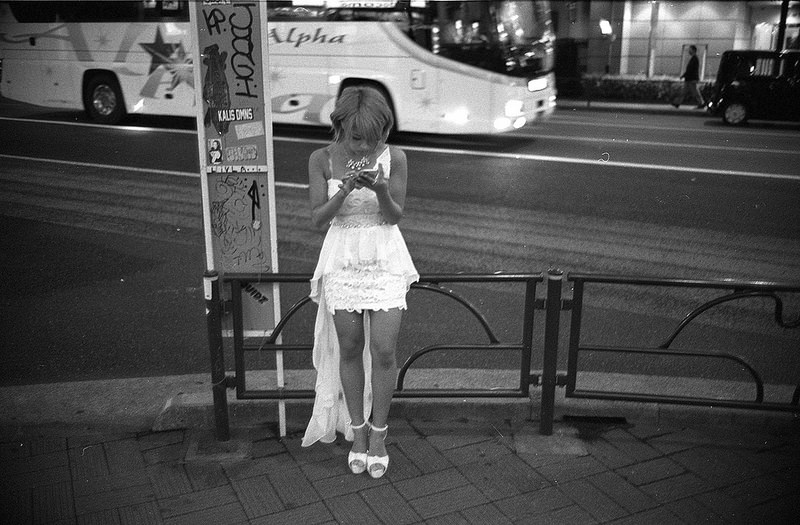
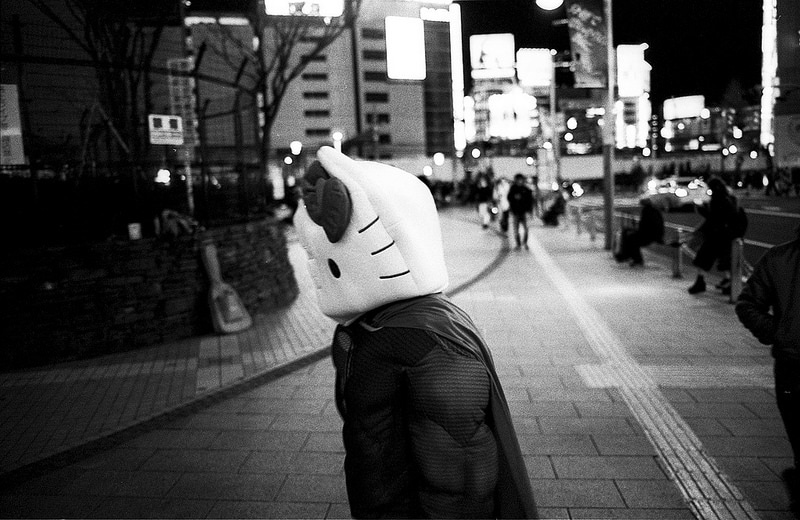 Can you tell us a little background about yourself and what brought you to Tokyo?
Can you tell us a little background about yourself and what brought you to Tokyo?
I am a chemist and specialize in fuel cell research, a technology that I think has the potential to replace conventional gasoline powered combustion engines, as used in cars and similar areas, as a more environmentally friendly technology.
After finishing my Ph.D. in Germany, I went to Japan for 7 years to work as a post-doc and then moved to Tokyo to do research here at another university. My work is completely unrelated to photography.
Initially, photography was more like a visual diary for me after coming to Japan to record my memories. Slowly, it became a passion for looking at things, and sometimes, if I find something interesting, taking photos of it. I absolutely do not do any photographic projects or any competitions.
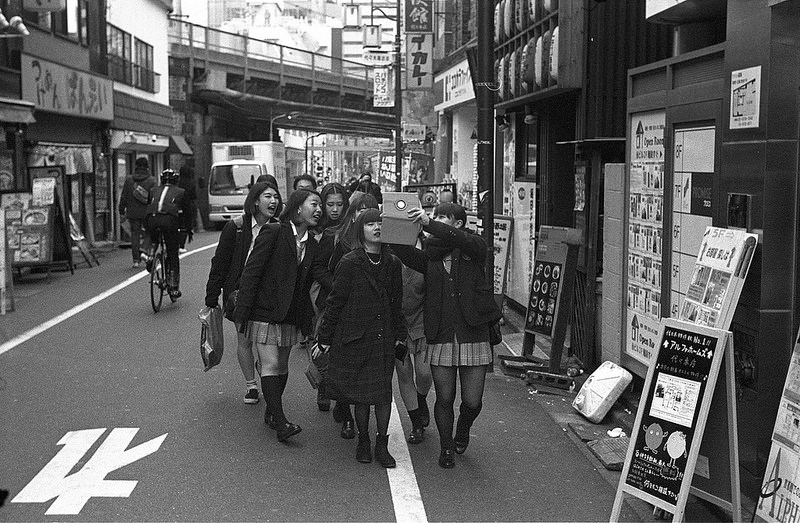
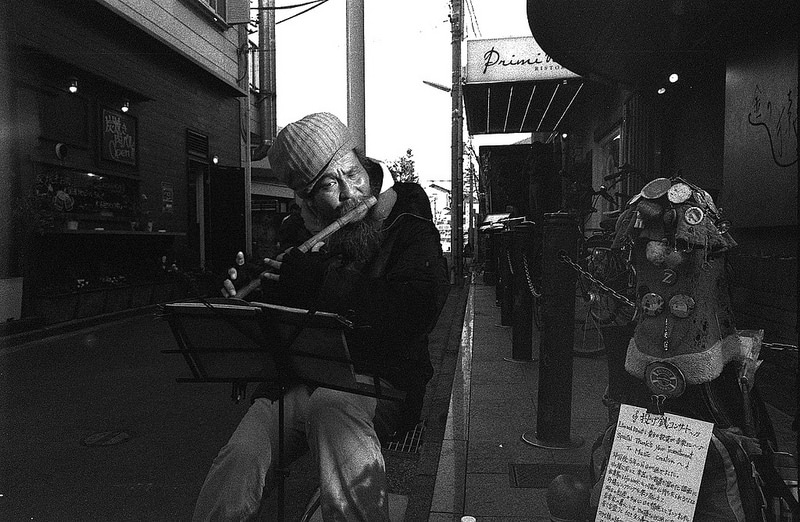
 I’m curious to know what you shoot with, and why the decision to primarily photograph in black and white?
I’m curious to know what you shoot with, and why the decision to primarily photograph in black and white?
I’ve been taking photos since I was a teenager, which means I started in the 70s when SLR with big zoom lenses were all the hype, but my first camera was my father’s AGFA box camera that used 120 roll film. However, the results were not as I expected and I moved on to some more sophisticated gear.
Anyway, my journey into photography started with film, at first color and later black and white film. This change happened because I was able to build and use a darkroom in high school and also because I started liking the aesthetics of black and white film. Therefore, it was cheaper to develop myself and making prints on my own, which was more fun and finally of better quality than the commercial lab prints.
The second reason was my favorite photo book, a special issue of LIFE magazine that featured all their iconic photos in one book. I got hooked on photos from Alfred Eisenstaedt, Robert Capa, and Henry Cartier-Bresson. After university (where my interest in photography was rather low) I moved to Japan and started using DSLR. This went well for about 3 years, but I got tired of the weight of the camera (Nikon D1x) and slowly remembered the photos of the LIFE photobook.
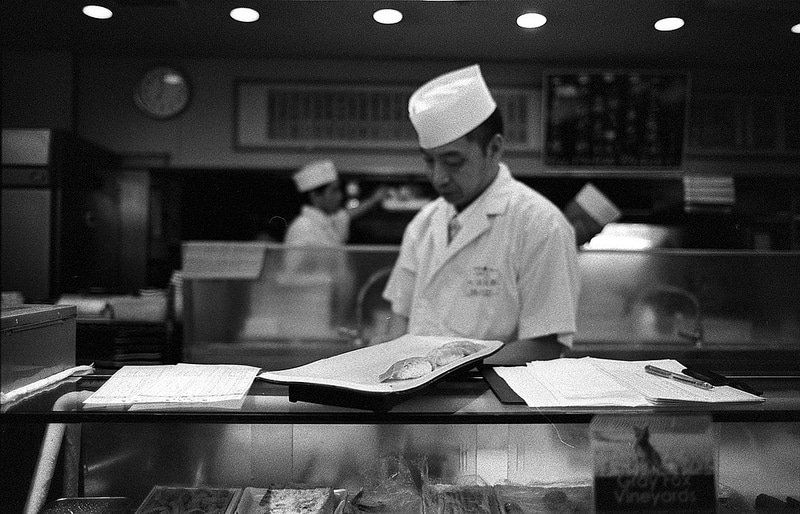
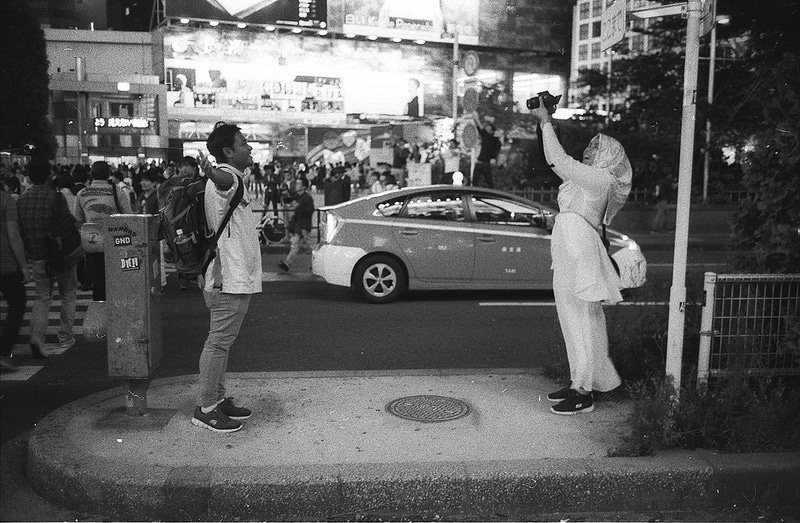
At that time the world wide web was already a good source for information and I found out about the cameras and techniques used by my photographic idols, which were mostly rangefinder cameras. I bought a Leica (M6) in January 2007 and since then use Leica rangefinder cameras, a Rolleiflex TLR from time to time, and very seldomly also a Linhoff Technica 4×5 camera. I started developing my film again after moving to Japan and still take photos almost exclusively in black and white and ob film. I like the look and the possibility to process and print on my own.
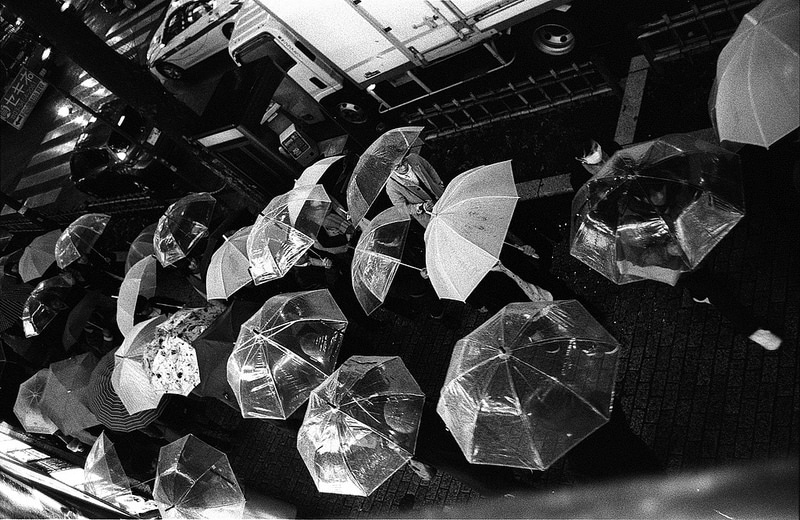
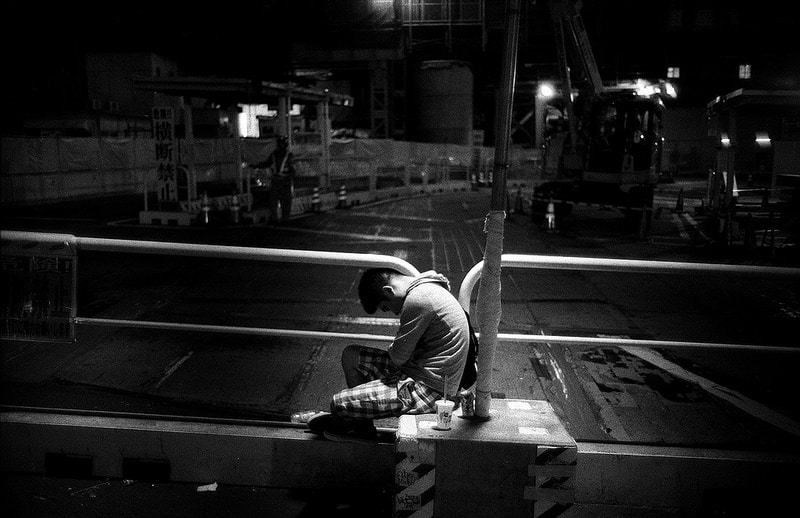
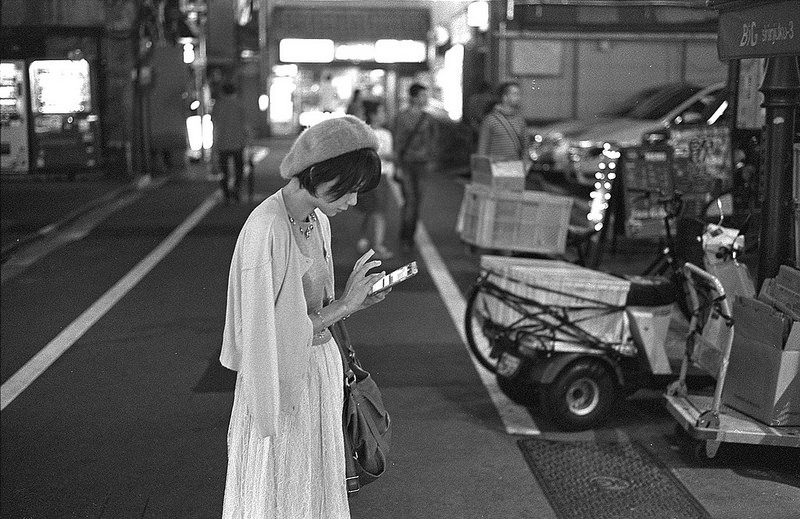 Your images seem to capture a sort of isolation, with people immersed in their technology much of the time, is there something specific you are trying to say about Tokyo culture with your work?
Your images seem to capture a sort of isolation, with people immersed in their technology much of the time, is there something specific you are trying to say about Tokyo culture with your work?
I think photos of Japan or Tokyo can be almost divided into three categories. The vast majority are photos taken by visitors who most often have no experience about the culture in Japan, which is considerably different than anywhere else in Asia—South Korea being close.
Another thing is that the Japanese culture is a very closed one. As a visitor, anybody is welcome to a certain degree but the Japanese will never show their true personality and will try everything to make the visitor feel welcome. Those photos show Japan from an outsider’s point of view.
The next large category is the photos by the Japanese photographers who know almost everything about their society, and they show different things in their photos. Among those, Daido Moriyama, Issei Suda or Nishimura Junku come to mind.
Finally, there is the group of foreigners who have lived a long time here in Japan, but are still outsiders to the Japanese society. I count myself in this group and we “see” things different than short time visitors but still reflect anything we seem to find interesting on our own cultural background.
Tokyo life is based on a balance between hard and long working hours and very short periods of relaxation, during which most people try to enjoy as much as possible and rest their mind. Technology is an important factor to do so, and so is the desire for having some privacy also during this time. This large contrast between work duty and relaxing time makes for huge differences in how people react at different times of the day. This is what I find interesting and try to photograph.

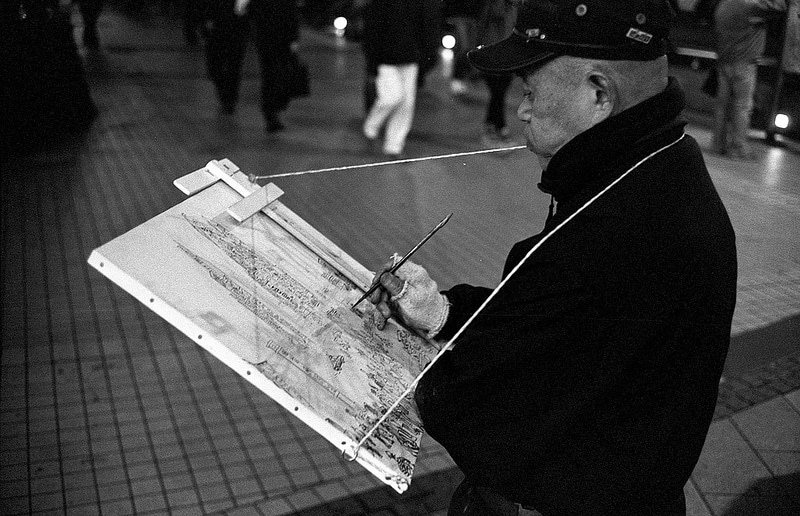 What’s your creative process?
What’s your creative process?
I really don’t have a creative process, but rather some personal rules. The first one is to carry a camera whenever possible and take photos as soon as there is a possibility, and something interesting. I almost never take more than one camera, one lens, and a roll or two of black and white film.
I also almost never go out with the aim of taking photos, but instead go somewhere for some reason and if I see something interesting then I photograph it. While photographing I try to respect the people’s private sphere and keep my role of an observer. The Japanese call it “snap” (abbreviation a snapshot) and I like that type of photography best. I develop and scan my films and then look for interesting frames. I don’t crop anything or do any post-processing. Therefore the amount of “keepers” are very small.

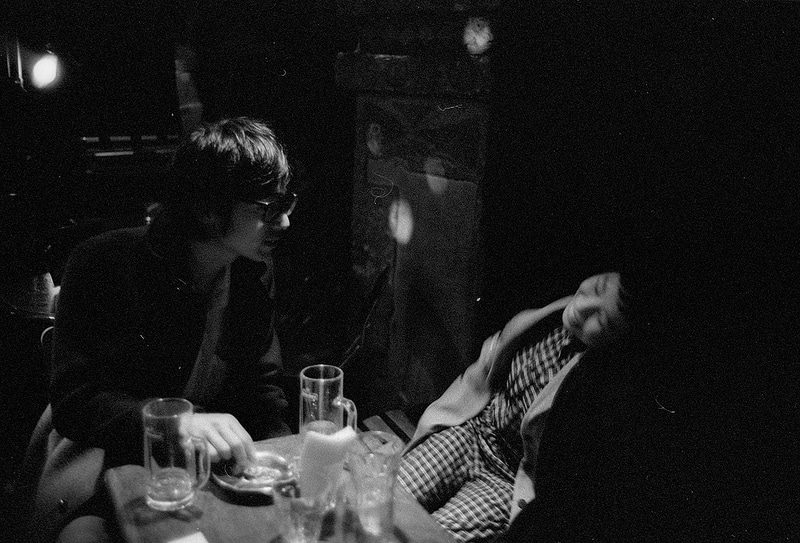 Gabor Samjeske: Flickr
Gabor Samjeske: Flickr
